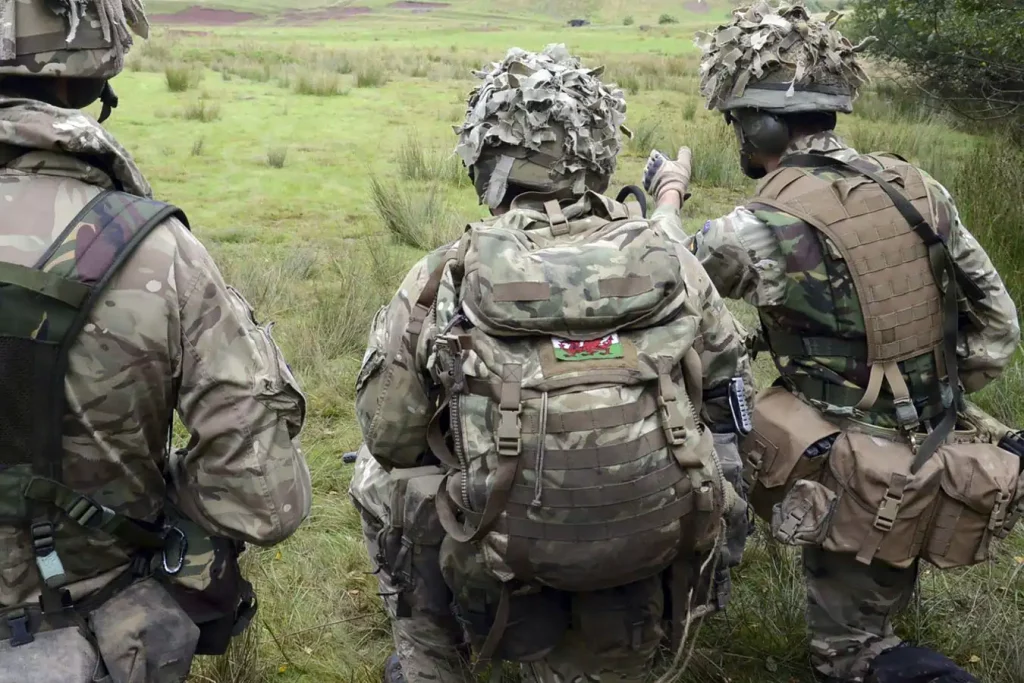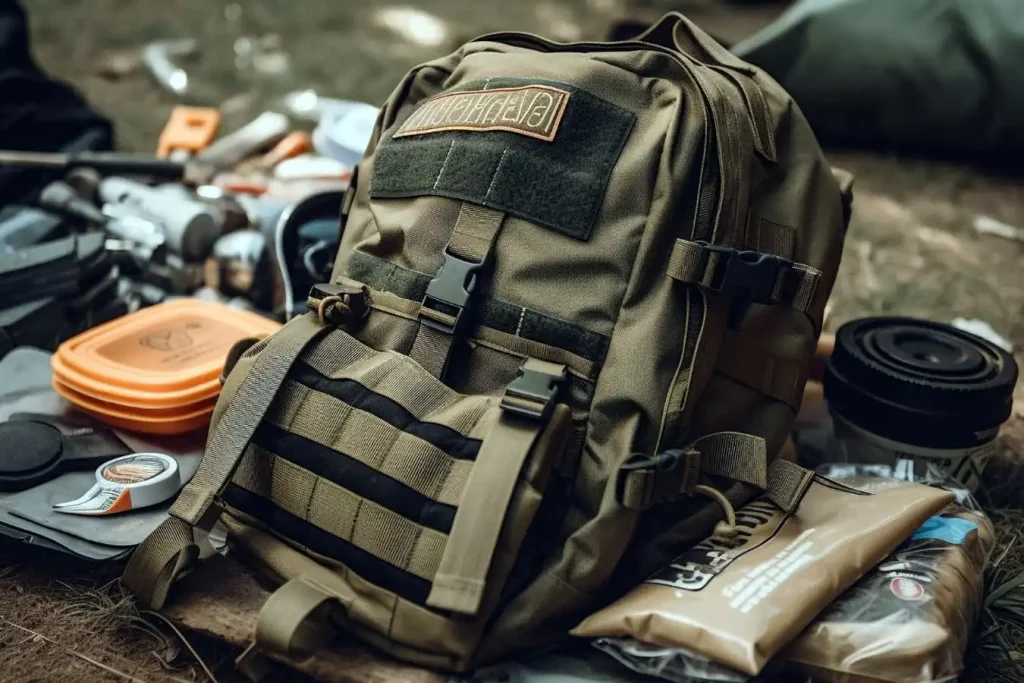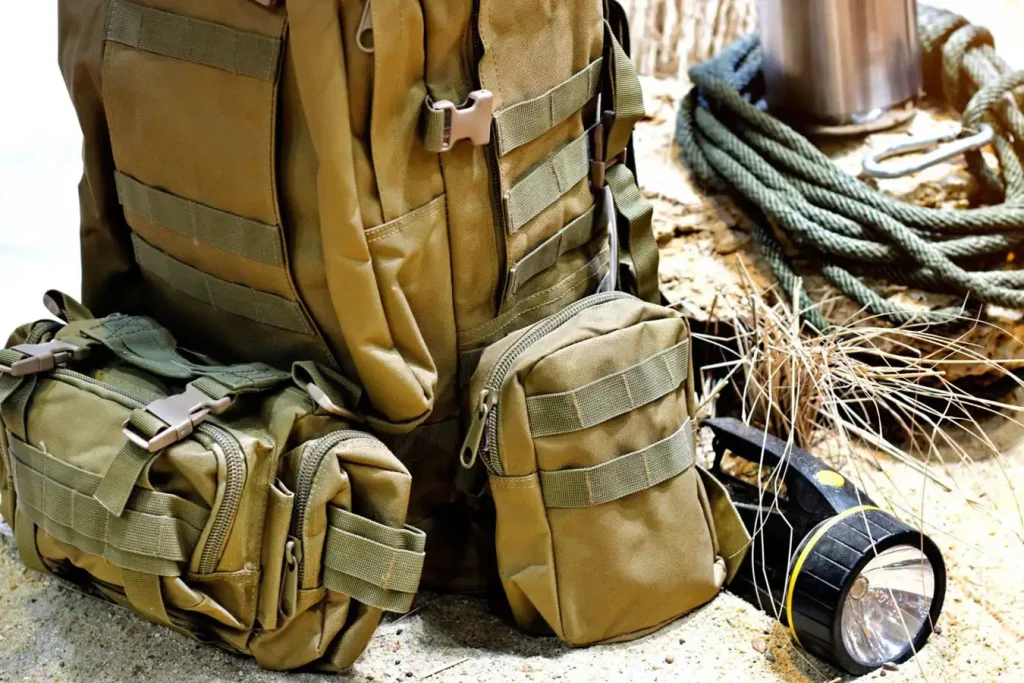Hey, have you ever peeked at a soldier's gear and thought, ‘what backpack does the military use?'
Same here!
I mean, if it's rugged enough for them, it's got to be perfect for our adventures, right?
They're not toting around generic bags, that's for sure.
Let's jump in and see the tough-as-nails backpacks our military swears by.
Prepare to discover some of the most resilient and efficient backpacks out there!
Understanding Military Backpack
Military backpacks aren't just for carrying stuff; they are specially designed to withstand harsh conditions, provide functionality, and offer comfort during extensive military operations. They're the unsung heroes of many successful missions, carrying essential supplies, and keeping everything organized for when soldiers need them the most.

Features of Military Backpacks
Military backpacks, or as they're often called, tactical backpacks, come loaded with features that you won't find in your average school or hiking bag. These are built to last, made from heavy-duty materials such as Cordura nylon, which is renowned for its durability and resistance to abrasions, tears, and scuffs.
The compartments are strategically designed for easy access and better weight distribution. They often include specialized pockets for radios, water bottles, and other necessary gear. Another vital feature is the MOLLE (Modular Lightweight Load-carrying Equipment) system. This innovative system involves rows of heavy-duty nylon stitched onto the backpack, allowing soldiers to attach additional gear according to their specific needs.
Ever wondered why military backpacks usually come in shades of tan, green, or camouflage patterns? These colors are chosen strategically to blend with the environment, ensuring that soldiers remain as inconspicuous as possible during operations.
Differentiating Military Backpacks from Civilian Backpacks
While there's a growing trend of civilians using military-style backpacks for their durability and versatility, there's a clear distinction between actual military backpacks and those designed for civilian use.
One of the key differences is that military backpacks are designed with the worst-case scenario in mind. They can withstand heavy weights and are built to endure harsh weather conditions. The materials used are top-notch and far more durable than those used in standard backpacks.
Moreover, military backpacks are built for quick, organized access. In contrast, civilian backpacks usually have a simple compartmental structure suitable for everyday use, but not necessarily for situations requiring immediate access to a range of different equipment.
Types of Military Backpacks
When it comes to military backpacks, one size does not fit all. Depending on the mission, the type of gear needed, and the duration of the operation, different kinds of backpacks may be required. Let's explore the various types of military backpacks used in the field.

Daypacks, Assault Packs, and Rucksacks: Know the Differences
Daypacks are the smallest type of military backpacks, typically used for short missions or reconnaissance tasks. They are designed to carry the essentials for a day's operation, including ammunition, rations, and medical supplies.
Assault packs are a step up in size. As their name suggests, they're used in combat situations. They can carry more equipment than a daypack and are equipped with additional pockets and attachments for gear like radios and tactical equipment.
Rucksacks are the largest of the three. These are designed for long, strenuous missions, often lasting several days. They can carry everything from sleeping bags to multiple days' worth of food and water.
Overview of Other Specialized Military Packs
In addition to these standard types, there are several other specialized packs. For example, there are packs designed to hold hydration bladders, medical equipment, or specialized communication gear. The variety and adaptability of these packs reflect the diverse needs of military personnel across different situations and missions.
Standard Issue: The Backpacks Used by Various Military Branches
Each branch of the military has its preferred backpacks, typically issued as standard gear to the soldiers. These packs have been extensively field-tested and are known to perform well under pressure.
The Army: MOLLE II Large Rucksack
The MOLLE II Large Rucksack is a staple among Army personnel. Known for its durability and spaciousness, it can carry a significant amount of gear. Its modularity, thanks to the MOLLE system, allows for customization based on the soldier's specific needs.
The Marines: FILBE Rucksack System
The Marines use the FILBE (Family of Improved Load Bearing Equipment) Rucksack System. Similar to the MOLLE II, the FILBE system offers excellent durability and modularity but is specifically designed to work seamlessly with the Marines' body armor.
Other Branches: Navy, Air Force, Coast Guard
While the Navy, Air Force, and Coast Guard may not require as extensive a load-bearing system as ground troops, they still have specific needs for their operations. For example, Air Force pilots may have specially designed packs for survival gear, while the Coast Guard might require packs that are water-resistant or even buoyant.
In-Depth Look: Popular Military Backpacks
Let's dig a little deeper into what makes these military backpacks so reliable and popular among the soldiers who use them every day.
Key Features, Sizes, and Design Elements
Beyond the sturdy material and large carrying capacities, military backpacks feature advanced ergonomic designs that distribute weight evenly across the wearer's body, reducing fatigue during extended use. Adjustable straps, a secure locking mechanism, and efficient compartmentalization of space are other common elements.
For instance, the MOLLE II Rucksack offers a capacity of 4,000 cubic inches, extendable to 5,000 with its two detachable sustainment pouches. In contrast, the FILBE Rucksack, used by the Marines, offers a colossal 7,500 cubic inches of space.
Usage and Feedback from Military Personnel
Many soldiers appreciate the rugged durability and thoughtful design of these packs. Feedback from the field has shown that these packs can withstand harsh environments and heavy use, all while keeping essential equipment safe, organized, and within reach.
One Army veteran commented on the MOLLE II, saying, “This ruck saw me through two deployments and countless field exercises. It's as reliable as the sunrise.”
Whether for a day-long reconnaissance mission or a multi-day combat operation, the right backpack can make a world of difference. It is this combination of reliability, durability, and adaptability that makes military backpacks an essential part of any soldier's gear.
Evolution of Military Backpacks
Like any piece of gear that's been in use over a long period, military backpacks have evolved to better serve their purpose. Let's take a look at this evolution, from early history to present day, and ponder what the future might hold.
Historical Overview of Military Backpacks
The history of military backpacks can be traced back to the Roman legions, who carried their gear in a ‘loculus' – a simple leather satchel. As time went on, backpack designs evolved with the changing needs of the military.
During the American Civil War, soldiers carried haversacks, simple canvas bags with a single shoulder strap. By World War II, the U.S. military had developed the M-1928 haversack, a more robust design with a separate pack and bag that could be worn together or separately.
The ALICE (All-purpose Lightweight Individual Carrying Equipment) system came into play during the Vietnam War, with nylon packs that offered improved durability and resistance to rot and mildew compared to canvas.
Modern Advancements and Future Trends
Modern military backpacks, such as the MOLLE and FILBE systems, offer unprecedented customization options. Their modular designs allow soldiers to tailor their packs to specific mission requirements.
Looking ahead, we can expect to see continued evolution. New materials might offer even better durability and weight-to-strength ratios. Advances in technology might lead to integrated communication or navigation systems. The future of military backpacks is as exciting as it is uncertain.
Civilians and Military Backpacks
Military backpacks aren't just for soldiers. Let's explore why some civilians choose military backpacks and what they should consider when buying one.
Why Some Civilians Choose Military Backpacks
The same features that make military backpacks suitable for soldiers also make them appealing to civilians. Durability, reliability, and modularity are just as useful in a hiking trip as they are in a military operation.
Some people appreciate the rugged, tactical aesthetic of military backpacks. Others value the practicality of having a bag that can withstand harsh conditions and heavy loads.
Considerations When Buying Military-Style Backpacks
Civilians considering a military backpack should be aware of a few things. First, while these packs are extremely durable, they are also heavier than most civilian packs. Additionally, their tactical look can stand out, which might not be desirable for all users.
It's also crucial to ensure that you're purchasing a genuine military backpack, not a low-quality imitation. Authentic military backpacks are designed and built to stringent specifications to stand up to harsh conditions.
FAQs about What Backpack Does the Military Use
What backpacks do they use in SEAL Team?
What's the best military backpack?
What backpacks do Marines use?
Is it OK to wear a military backpack?
Conclusion
Military backpacks are more than just bags for carrying gear. They're an essential piece of equipment that can make a significant difference in the success of a mission. Understanding the features and capabilities of these backpacks, as well as their history and evolution, provides a fascinating insight into the practical demands of military life.
Whether you're a soldier on a multi-day operation or a civilian planning a hiking trip, a reliable backpack is essential. And as we've seen, when it comes to reliability and versatility, few packs can match those designed for the military.
In the end, understanding military gear like backpacks helps us appreciate the thought, research, and ingenuity that goes into developing equipment that can stand up to some of the most challenging conditions imaginable.
Read more our review on the Backpack for Skiing


